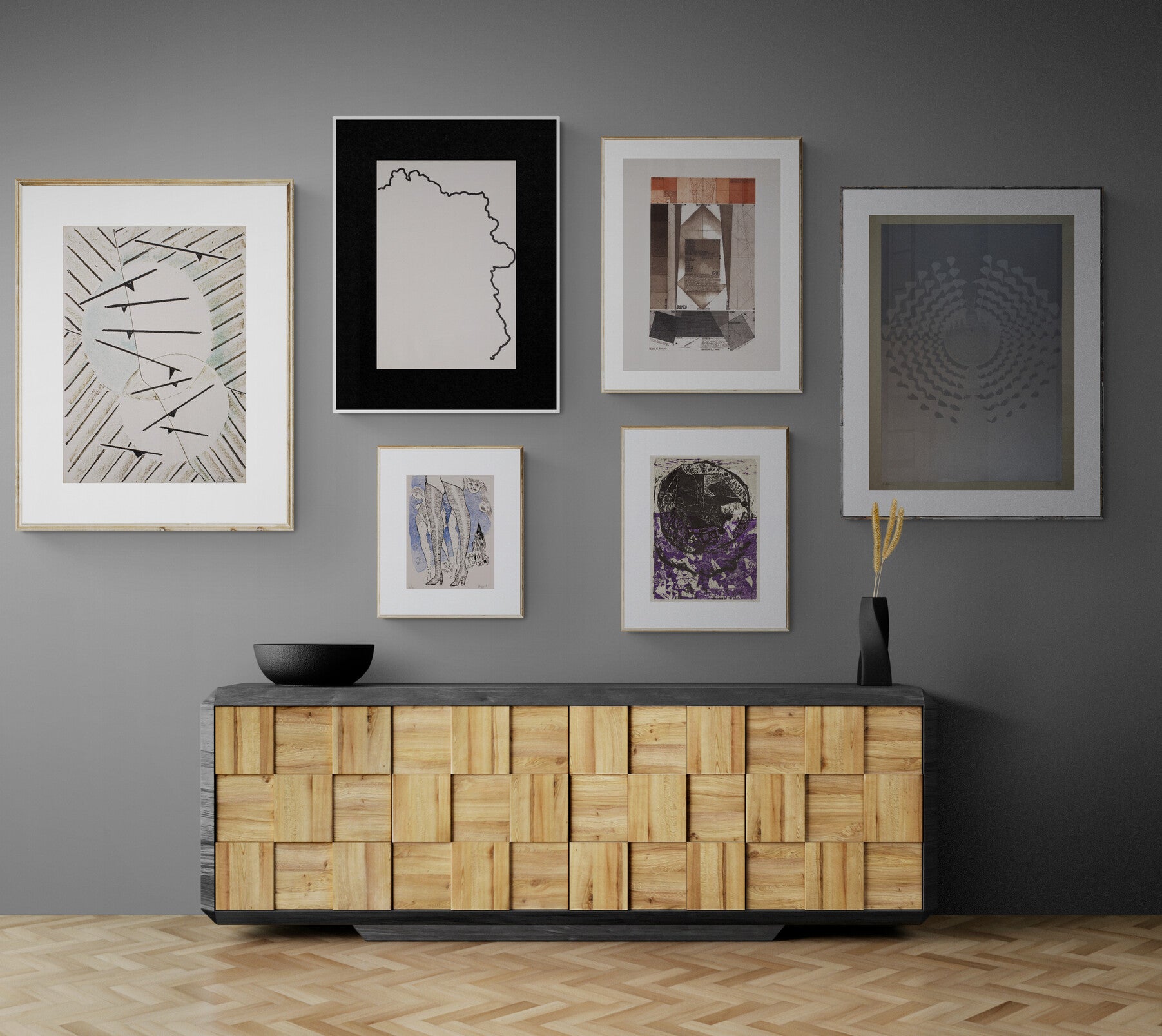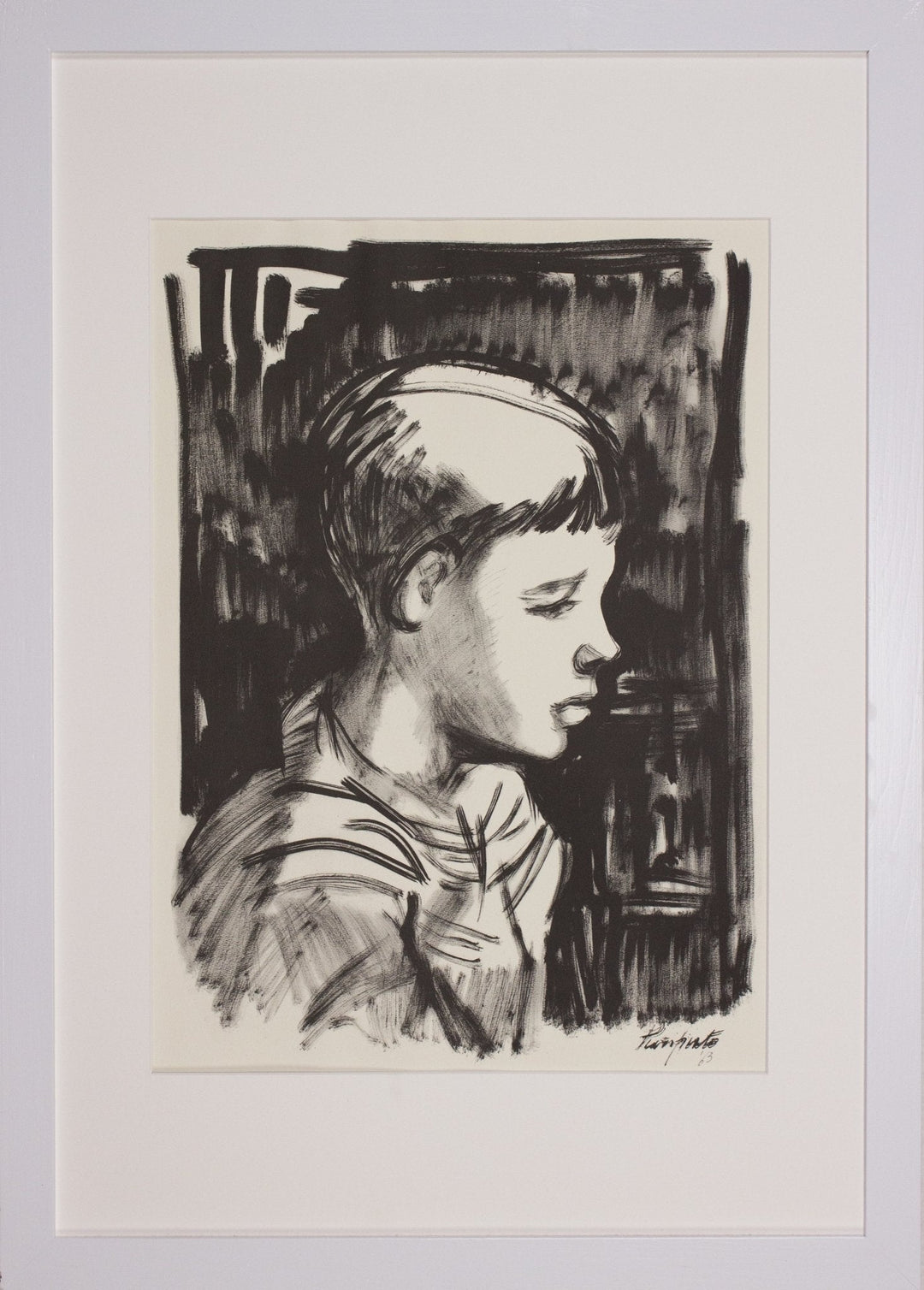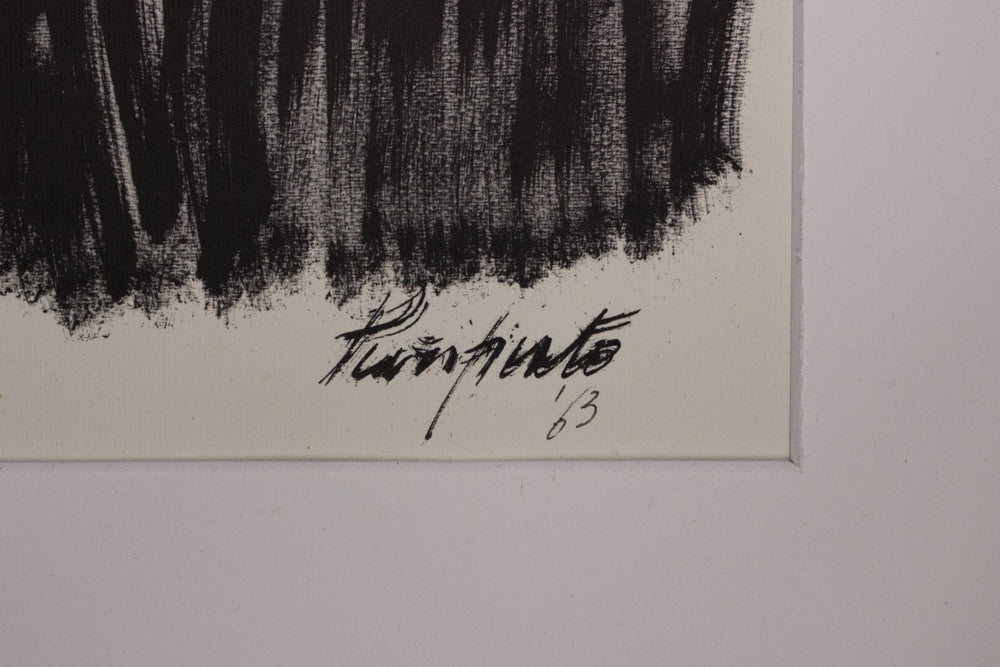Domenico Purificato, born on 14 March 1915 in Fondi, in the province of Latina, was an Italian painter of great importance. After obtaining his classical high school diploma, Purificato decided to dedicate himself to painting, while continuing his studies in law. In 1934 he moved to Rome, where he met his fellow villager Libero de Libero. This meeting proves to be fundamental, since De Libero introduces Purificato to the artistic circles of the capital, in particular to the Scuola Romana.
Purificato exhibited for the first time in 1936 at the Galleria La Cometa in Rome. During the 40s and 50s, he became a leading figure of neorealism, immortalizing in his works people of the common people and scenes of daily life, with particular attention to the people of southern Italy and the their living conditions. In 1942, he participated in the X Mostra del Sindacato Fascista Professionisti e Artisti, winning a prize intended for young emerging painters.
From 1940 to 1943, Purizzato worked as an editor for the magazine "Cinema" and, from 25 July 1943, he also became its editor-in-chief, replacing Vittorio Mussolini. His collaboration with the magazine ended at the end of 1943 due to war events. In 1956 he collaborated with the neorealist director Giuseppe De Santis for the film "Giorni d'amore", taking care of the study of colour, scenography and costumes.
Purificato participated in numerous editions of the Rome Quadrennial (from 1943 to 1965) and the Venice Biennial (from 1948 to 1954). Furthermore, in 1953, he was among the protagonists of the figurative arts exhibition " Art in the life of Southern Italy ", held at the Palazzo delle Esposizioni in Rome, with the artwork " Ricordo di Ciociaria ".
His artistic activity is not limited to painting: Purizzato is also the author of essays and literary works. Among his best-known writings are "The painting of the Italian nineteenth century" (1959), "The colors of Rome" (1965), "Callimaco, a painting for man" (1971) and "How to read a painting" (1985), published posthumously. At the same time, he contributes to the artistic debate by collaborating with magazines such as "Maestrale", "Rinascita" and "La Fiera Letteraria", and directs the monthly "Figure".
In 1972, Purificato was appointed director of the Brera Academy in Milan, a position he held until 1980. During this period, he continued to paint and exhibit his works, which achieved great success. Among the most important exhibitions are those organized at Palazzo Reale in Milan in 1974, at Castel Sant'Angelo in Rome in 1983 and at Palazzo dei Diamanti in Ferrara in 1984.
Purificato maintains a strong bond with its homeland, Ciociaria, participating in various cultural initiatives in the region. In 1962, he was part of the examining commission of the "Ciociaria vi presents" exhibition in Rome, and in 1963 he was a member of the jury of the "Pittura in Ciociaria" competition at the Casamari Abbey, chaired by Giorgio De Chirico.
His artistic research is characterized by the investigation into the visceral relationship, timeless, often conflictual, between man, his land, nature and the animal world, as well as the gap between nature and progress. In the last thirty years of his life, Purified went beyond social realism, exploring themes such as the solitude of men and women, their desire for tenderness and >awareness of the transience of life.
Purificato is also a set and costume designer for the theater. In 1970 he created the set and costumes for the ballet "Petruška" by Igor' Stravinsky, performed at the Teatro dell' Artwork in Rome. He also designed a mosaic for the lunette of the medieval cathedral of Fondi.
During his career, Purificato received numerous awards and his works became part of important public and private collections. Among the prizes established in honor of him, there is the "La Pastora" Fondi Award for dramaturgy and entertainment.
Domenico Purificato died in Rome on 6 November 1984, at the age of 69, following a stroke. In honor of him, a school in Rome and the Fondi stadium are named after him, reflecting the lasting impact he had on the world of Italian art and culture.

Domenico Purificato
Purified Dominic | Original graphics, lithographs, etchings, unique works, drawings and paintings
|
BIOGRAPHY Domenico Purificazione (Fondi, 14 March 1915 – Rome, 6 November 1984) was an Italian painter. After graduating from high school, he dedicated himself to painting while continuing his law studies. In 1934 he moved to Rome where he met his fellow villager Libero de Libero who introduced him to the artistic environment of the Roman School. he exhibited for the first time in 1936 at the "Cometa" gallery in Rome. A multifaceted artist, from 1940 to 1943 he was editor of the magazine Cinema, for which, among other things, in 1940 he wrote a series of 12 articles on the relationship between cinema and painting. He also became the editor in chief, replacing Vittorio Mussolini starting from 25 July and until the closure of the periodical at the end of 1943 due to war events. he Continue reading. |
WORKS
Domenico Purificato Pittore








: invalid url input -->)